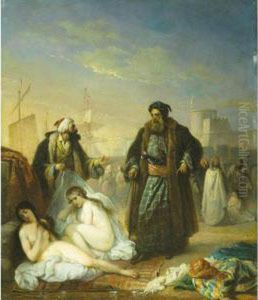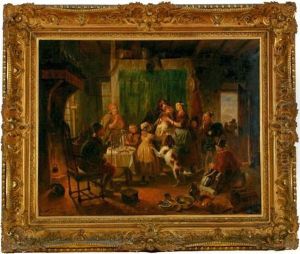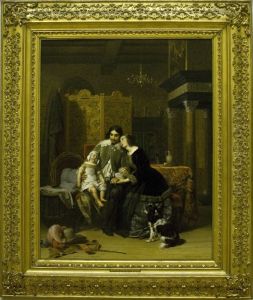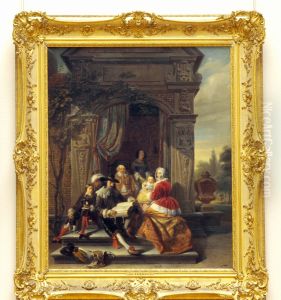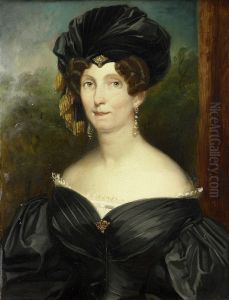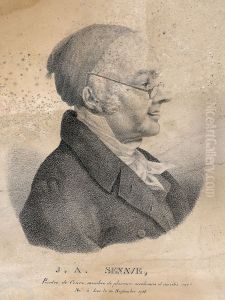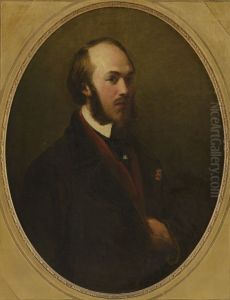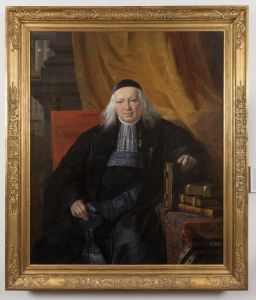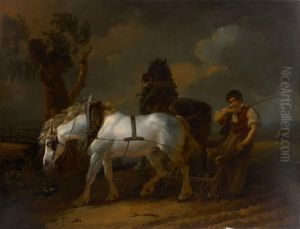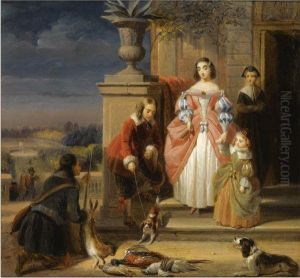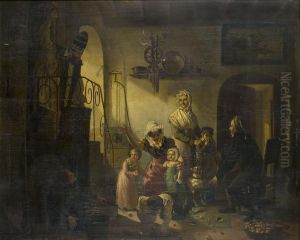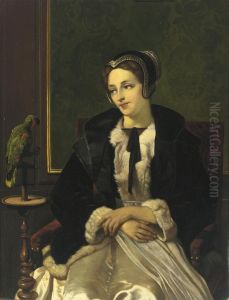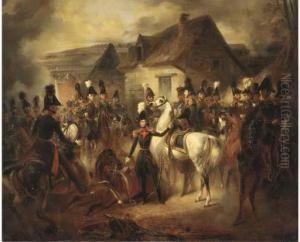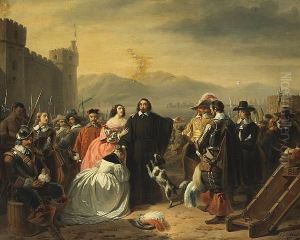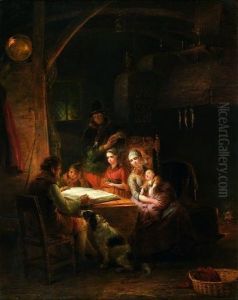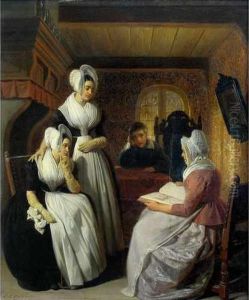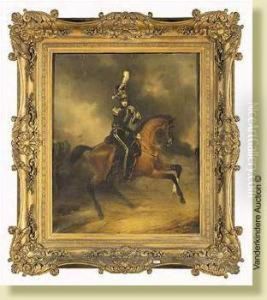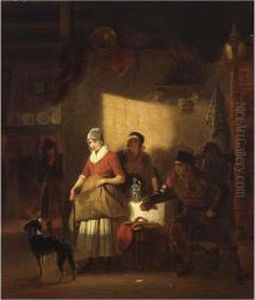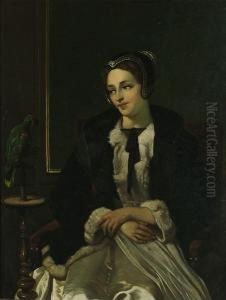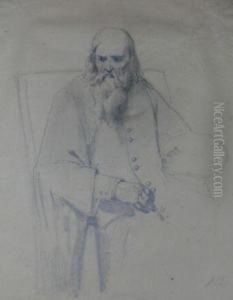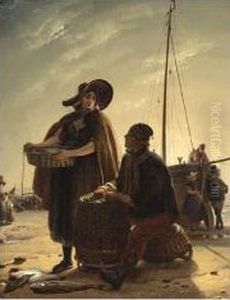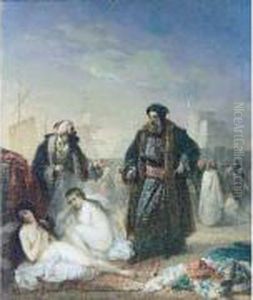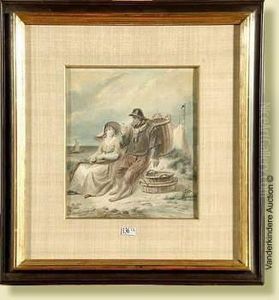Jacobus Josephus Eeckhout Paintings
Jacobus Josephus Eeckhout, born in Antwerp, Belgium in 1793, was a 19th-century artist renowned for his paintings, drawings, and lithographs that vividly captured scenes from daily life, historical events, and exotic locales. His work is characterized by meticulous attention to detail, vibrant colors, and a keen observation of human expressions and emotions. Eeckhout's artistic journey began in his native Belgium, where he initially honed his skills and developed a keen interest in depicting the world around him.
Eeckhout's passion for art took him beyond the boundaries of Belgium, leading him to travel extensively throughout Europe and eventually to Asia, where he became one of the early European artists to document the life, culture, and landscapes of the East Indies, particularly India. These travels significantly influenced his work, introducing exotic themes and subjects that set his work apart from his European contemporaries.
Throughout his career, Eeckhout exhibited a remarkable versatility, adeptly working in various mediums, including oil painting, watercolor, and lithography. His lithographs, in particular, gained substantial acclaim for their precision and beauty, making significant contributions to the field of printmaking in the 19th century.
Jacobus Josephus Eeckhout was not only a prolific artist but also a respected figure in the artistic community of his time. His works were exhibited in numerous salons and galleries across Europe, earning him recognition and awards. Despite the fame, Eeckhout remained dedicated to his craft, continuously exploring new subjects and refining his techniques until his death in 1861.
Today, Eeckhout's legacy lives on through his extensive body of work, which continues to be celebrated for its historical value and artistic excellence. His paintings and prints provide a fascinating glimpse into the 19th-century world, bridging cultures and time periods through the universal language of art.
